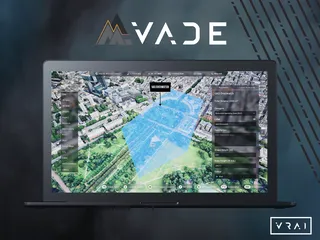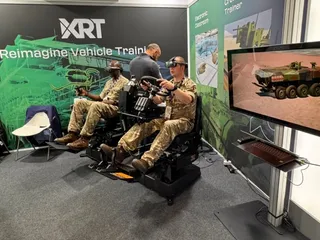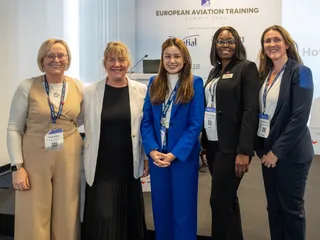Alliance Invites Public Input to Future Flight Training Framework
Contact Our Team
For more information about how Halldale can add value to your marketing and promotional campaigns or to discuss event exhibitor and sponsorship opportunities, contact our team to find out more
The Americas -
holly.foster@halldale.com
Rest of World -
jeremy@halldale.com

By Rick Adams, FRAeS
NFTA Leading FAA Effort to Modernize US Part 141 Regulations
“It is time for an update to Part 141. Actually, it's well past time,” declared Mark Steinbicker, Director of the US Federal Aviation Administration (FAA) Office of Safety Standards.
Steinbicker’s remarks kicked off a virtual meeting last week with upwards of 500 listeners for an initiative the FAA labels ‘Part 141 Modernization.’
Part 141 flight schools must use a structured training program and syllabus approved by the FAA, graduate a minimum number of students, achieve defined pass rates and are subject to audits and inspections. It is generally regarded as the primary pathway for aspiring airline pilots. There are 509 Part 141 schools in the US, less than 30% of private pilot training, the other 70+% under less-structured Part 61.
The foundations of current Part 141 regulations were laid in the 1970s, and according to Lyndsay Carlson, Part 141 subject expert in the FAA General Aviation and Commercial Division, there haven’t been any major revisions to Part 141 since 1997 - 28 years ago (pre-GPS, pre-EFB, etc.). “We haven't had a holistic look at 141 in years.”
“It is long past time for 141 to be offered some new way forward, a new framework and a new ethos,” stated Lee Collins, CEO of the National Flight Training Alliance. “Our regulatory framework prohibits us from being as good as we can be.” NFTA (https://www.nftaus.org) is a relatively new organization formed in the wake of the Covid chaos which significantly disrupted the ranks of commercial airline pilots in the United States. The FAA asked NFTA to take the industry lead for the 141 effort.
“We are the gateway to aviation. We are literally the front door. So what we do at the beginning affects everything that comes after it,” Collins emphasized. “Without a robust, fully functioning and efficient flight training system, we cannot reach the objectives given to us by Congress, the FAA and the industry.”
“This is your opportunity as industry, as stakeholders in pilot training, to provide thorough and detailed recommendations for what could end in a generational opportunity to modernize pilot schools,” said Everette Rochon, Manager, FAA Training and Certification Group. He cautioned, this is not an “advisory committee, nor is it an aviation rulemaking committee. What we are starting is a series of FAA industry public meetings; it's more flexible because it's not bound by those statutory requirements.”
Modernization Meeting Schedule
Beginning 1-3 April, the Part 141 group will begin conducting a series of seven meetings, alternating hybrid in-person/ online ‘primary’ sessions followed by ‘secondary’ virtual sessions (opportunity for follow-up discussions). The in-person meetings have some limitations on attendance because of office space.
Each set of meetings will focus on defined topics:
1-2. Certification, Certificate Management, and Examining Authority
- Primary (hybrid) - April 1-3 - FAA Southern Regional Office, College Park, Georgia
- Secondary (virtual) - May 6-8
3-4. Safety: Risk mitigation, reduction of fatal accidents, and Quality Assurance System as defined by ICAO.
- Primary (hybrid) - June 10-12 - FAA New England Regional Office, Burlington, Massachusetts
- Secondary (virtual) - July 8-10
5-6. Technology and Learning: Emerging technologies such as aircraft, simulation, EFBs, recordkeeping; various learning and examination methods.
- Primary (hybrid) - October 7-9 - FAA Southwestern Regional Office, Fort Worth, Texas
- Secondary (virtual) - November 4-6
7. Closing Public Meeting (hybrid) - Dec 2-4 - FAA Western Pacific Regional Office, El Segundo, California
To register for any of the meetings, visit the Part 141 Modernization page.
To participate in one of the working groups preparing for the public meetings, send your area of expertise and working group requested to: 141taskforce@nftaus.org.
“The Objective of this Project...”
...declared one FAA slide, “is to advance Part 141 training into the 21st Century and beyond, serving the needs of the flight training industry.”
NFTA’s Collins said, “When asked by the former FAA Administrator (Michael Whitaker), when he and I were in conference [at WATS] just about a year ago in April, what's the number one thing that we need to improve training, I said absolutely, without hesitation, an updated 141 regulatory framework that embraces technology and incentivizes participation.”
“Do you want to just amend 141 as it's written in the framework? Or do you want to start with something completely different that you know meets the mark for succeeding generations to come and will be a big, big move for all?
“I challenge you to dream big,” Collins stated, “and say, what would we do if we can do anything.”
“We want to provide for better student outcomes to produce the best pilots in the world, wherever possible reducing costs as a barrier to entry. And in this new age of technology and virtual reality and artificial intelligence and the like, to be able to embrace technology wherever possible and feasible, to improve throughput, to improve efficiency, and to improve overall the ability of this industry to act in one accord with its regulators on a very nimble basis to improve training,” he added.
Carlson noted: “We want to provide the safest training environment we can in this world. That's our number one goal. Obviously, that's through structured courses. Advancements in training delivery procedures can produce better pilots, better aeronautical decision making.”
She expects the Part 141 effort will glean lessons learned from the recent power lift [eVTOL] rulemaking and from [sport aircraft] Modernization of Special Airworthiness Certificates -MOSAIC. “Those two have really encapsulated all these efficiencies and innovation and technology.” [Editor’s Note: There was no mention in the introductory meeting of last year’s Air Carrier Training Aviation Rulemaking Committee (ACT ARC 24-1), which seems to have covered similar ground and proposed an additional Professional Flight Training Organization (PFTO) certification for flight schools “satisfying standards above and beyond” the current Part 141.]
“What about competency-based training and assessment? Virtual and mixed-reality simulations? Those are all things that haven't been utilized in in the past,” Carlson added.
“What about sharing training methods and technology and data?,” she asked. “We know data drives a lot of things and can help us make us better decisions. If we can have a data-driven approach to ab initio and initial flight training, then we can see the changes that need to be made and then have a regulatory scheme that will allow us to make these changes quickly to address the safety concerns.”
One glaring gap is ICAO compliance. “We just went through an ICAO audit,” she said, “and one of the things we recognized is that currently Part 141 does not have a quality assurance system within it, and it is required by ICAO.”
“We want to encourage innovation throughout this project. We want efficient and effective regulatory structure. We want to incentivize joining the Part 141 community.”
“The goal at the end of this entire thing,” she explained,” is to present to the FAA a report that would be potentially the new regulatory scheme, as close to regulatory text as possible to make it very easy for adaptation at the end by the FAA.”
“We want your knowledge. We want your expertise. We recognize that we cannot do this alone.” And Carlson promised, “We're not only going to document the majority positions, we're also going to document the dissenting.”
“FAA is primarily going to be in a listening mode,” noted Rochon, “with broad interests to ensure safety, efficiency, and effectiveness of pilot training and pilot schools. It's not just about rulemaking, it's about smart rulemaking.
“In Washington D.C. there is a strong emphasis on deregulating and streamlining, not adding undue burden to industry or business or progress,” Collins told the virtual group. “So in that regard, this particular effort may fit very, very well. We want to look at where regulation impedes efficiency and where policy prohibits innovation, or at least squanders the opportunity to at least look at and embrace innovation.”
“We want to create the big tent, the atmosphere where everyone in aviation training or even related to aviation training can come together and work collaboratively to determine a vision and a future forward for the industry that makes sense.”


